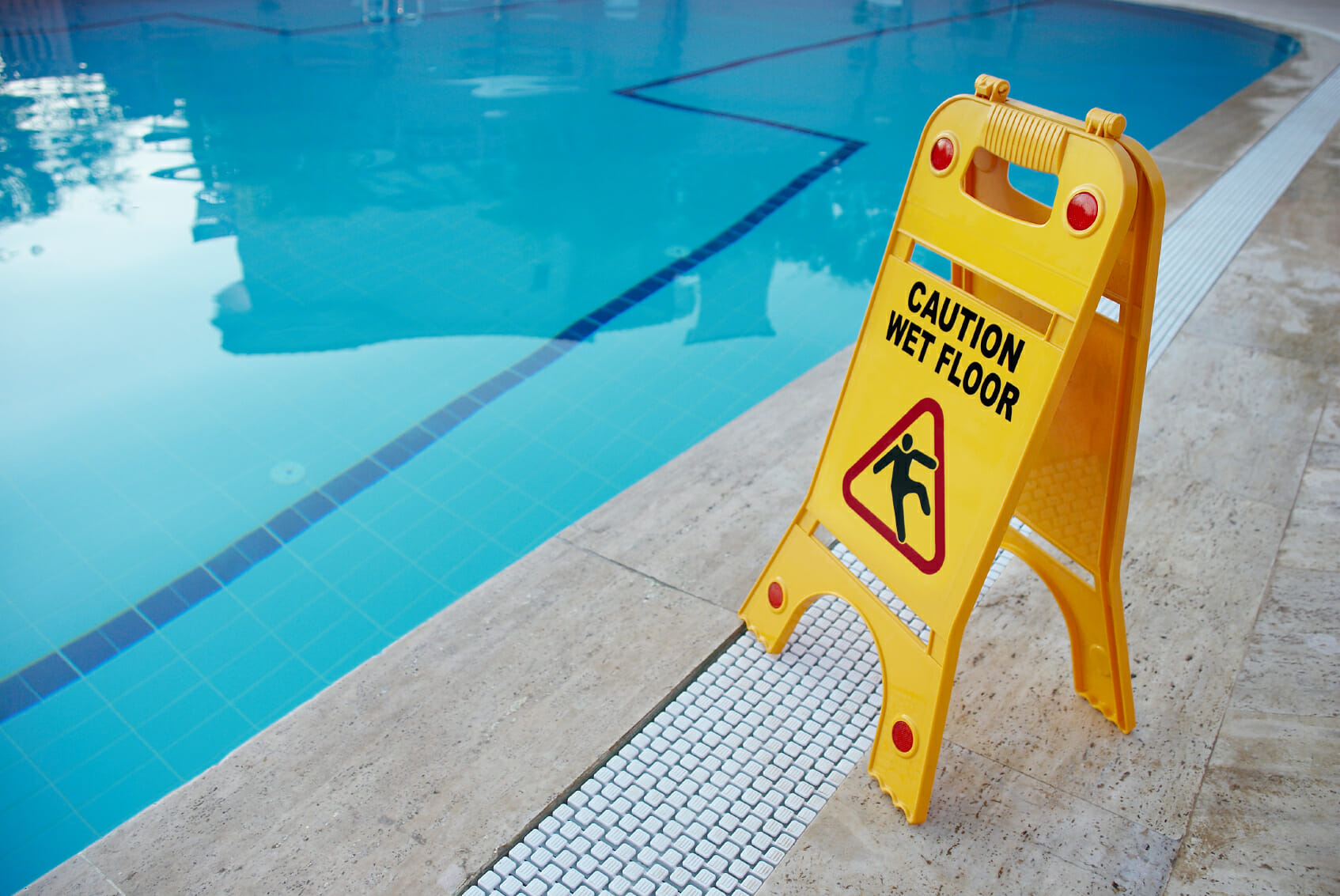In July 2009, a guest at a large hotel in Swansea slipped and fell whilst walking on the surround of the hotel’s swimming pool. Minutes afterwards, after recovering from that fall, the guest fell a second time, sustaining severe personal injuries.
It was alleged by the Claimant that the flooring installed around the pool area was not fit for purpose, being too slippery for pedestrians to use safely in wet conditions. It was also alleged that the disposable slippers provided to all guests (to be used within the pool and spa areas) were not fit for their intended purpose, as they too were unacceptably slippery for guests to use safely.

Dr Paul Lemon, Hawkins’ specialist in the field of slip, trip and fall investigation, was instructed to undertake on-site testing and to generate a report for use in the Weston-Super-Mare County Court. A site investigation was undertaken, during which the frictional properties (specifically the coefficient of dynamic friction, referred to as CoFd) and the surface texture (the ‘Rz surface microroughness’) of the floor surface around the pool were assessed. Dr Lemon, who has specialised in slip, trip and fall investigation for over 20 years, used the test data generated to predict accurately the likely slip resistance of the floor surface. Those tests were undertaken in strict compliance with the guidelines produced by the UK Slip Resistance Group; Hawkins is a key member of that Group, which is Chaired by the Health & Safety Executive.
Test results showed that the floor surface generated a CoFd of up to 0.56 when clean and dry, and up to 0.29 when wet, resulting in the classification of the dry floor as ‘Low Slip Potential’ and of the wet floor as ‘Moderate Slip Potential’. Although far from ideal, this demonstrated that the floor surface was not unacceptably slippery for use in wet conditions, a view which Dr Lemon defended under cross-examination in Court.
An exemplar pair of disposable slippers was examined under laboratory conditions, along with the slippers worn by the Claimant at the time of her falls. Although it would have been technically feasible to measure the slip resistance of the slippers directly, it was suggested by Hawkins that doing so would require the use of complex and prohibitively expensive ‘subject-based’ test methods (where experienced test subjects wear the footwear under controlled, challenging conditions). As a result, an objective assessment of the slippers was undertaken, based on an analysis of the structure of the sole materials used. It was demonstrated that the composition of the sole (being made of a woven fabric outsole with an open-pored polymer ‘sponge’ as the midsole) was such that any water-based contamination present on the flooring around the pool would have been dispersed/absorbed at the moment that the sole contacted the floor.
Dr Lemon supported this principle using “hydrodynamic film theory” (a subject on which he has published work in the past), which showed that the soles of the slippers would prevent the formation of the hydroplane that is normally associated with slips in wet conditions. The following relationship was used:
Where h is the thickness of the hydroplane film, Fv is the vertical force applied by the heel to the floor, u is the velocity of the moving heel, ŋ is the viscosity of the fluid (pool water in this case), and l relates to the contact dimensions.
It was shown that the thickness of the squeeze film formed beneath the heel of the disposable slipper would have been of the order of microns (millionths of a metre). Dr Lemon demonstrated that, as the pores within the foam of the sole were orders of magnitude larger than the thickness of the water film formed beneath the heel, ‘solid to solid’ contact would be maintained between the heel and the floor, as the water film was ‘broken through’ by the heel material. Put simply, it would not be possible for a hydroplane to be formed, and so the likelihood of a person slipping and falling would be reduced dramatically. Dr Lemon explained to the Court that the slippers supplied by the Defendant therefore essentially mitigated the influence of water being present on the floor, reducing the overall risk of slipping to a very low level.
The case was heard at Weston-Super-Mare County Court in February 2013, where the Judge accepted Dr Lemon’s evidence and found in favour of the Defendant (the Hotel owners).
ABOUT THE AUTHOR
Paul is a specialist within slips, trips and stair fall incident investigation and, leads Hawkins’ work in this area. Paul was part of the small HSE team that developed HSE’s early understanding of the causes of pedestrian slips, trips and stair falls. Paul’s extensive experience has led to him serving as HSE’s principal Expert Witness for cases involving pedestrian accidents, presenting evidence to Magistrates’ Courts, Crown Courts and at Coroner’s Inquests.







